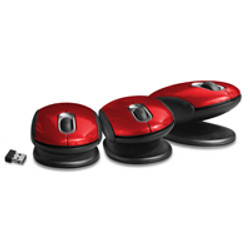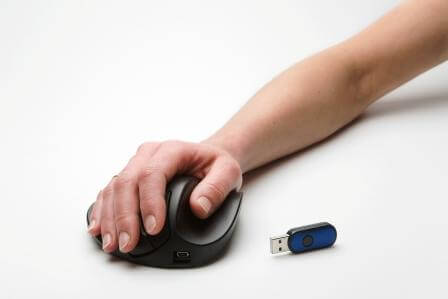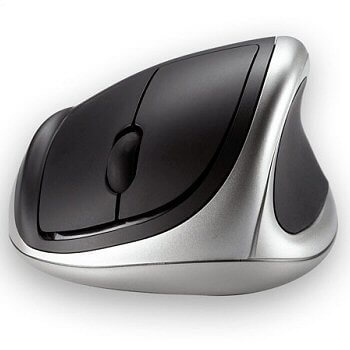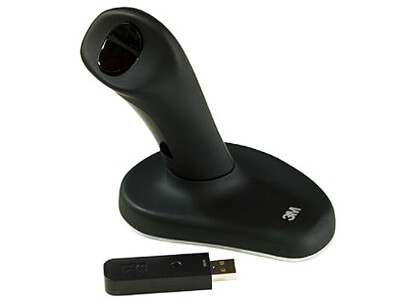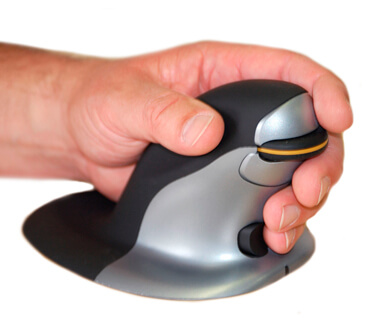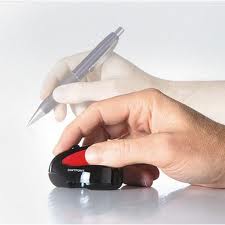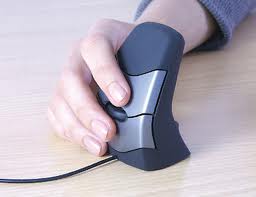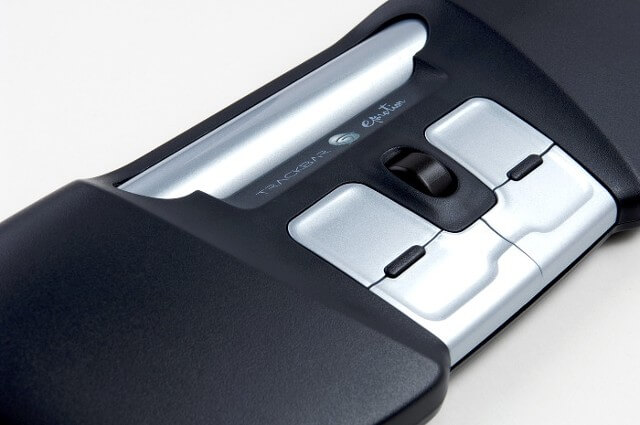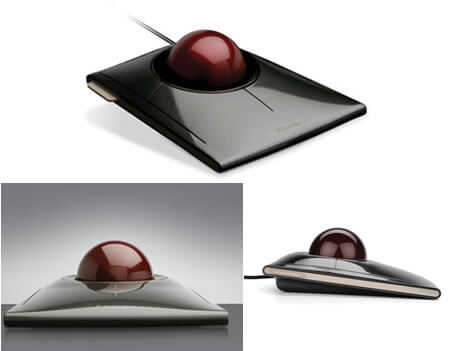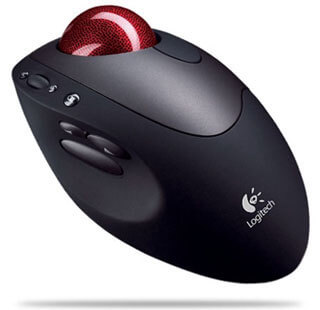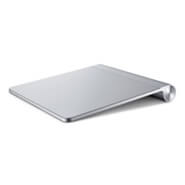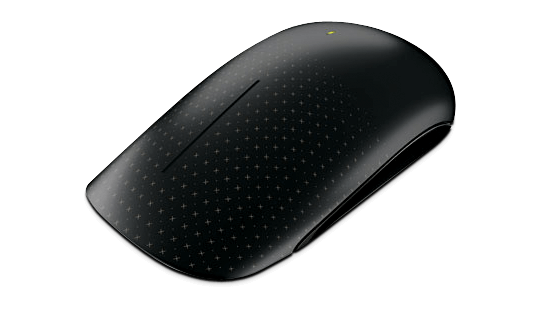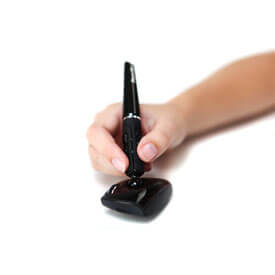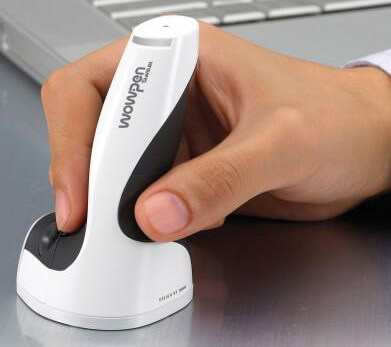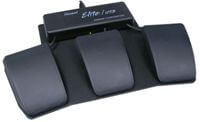Ergonomics Theory in Computer Mouse Design
Posted by Peter Budnick, PhD, CPE on 10th Oct 2017
Note from the author: The inventor of the computer mouse, Douglas Engelbart, recently passed away, and I was reminded of this article. The mouse design category concept I present further down in the article remains a work in progress, and is likely somewhat out of date by now, but I hope still useful as an approach to understanding the variation in mouse designs and product options.

I'll date myself by telling you my first interactions with computers took place in the 1970's, when mainframes the size of buildings where the state-of-the-art (the pictures I've included here look more like the 1960's, though). The human inputs to the system where a deck of cards, each with a pattern of holes that represented a single line of computer code. We would first sit at a large mechanical machine with a keyboard and type each line of code, which the machine would then translate into the proper representation of holes on the cards. If you've programmed computers before, you know a single computer program can consist of hundreds, thousands, tens-of-thousands, or even millions of lines of code. I'm talking about a lot of punch cards. We would type for hours on those mechanical card punch machines.


Once we'd typed out our stack of cards, we'd feed them into an air-powered machine that would suck them quickly through the card reader. The card reader literally sat in front of a large curtain, behind which, presumably, sat either the computer, or the Wizard of Oz; we were never sure which. That was the fastest part of the human-computer relationship, because the process would then be queued in the mainframe, which could only process one thing at a time. So we would wait, often for many hours. And wait. And wait.
Then the operator would appear and call out your name and hand you your results, often letting you know that you made a typo on card number 632, or that your cards were out of sequence, or that your logic was incorrect. Back to the punch card machine to fix things, then submit the job again, then wait, again. It was slow, frustrating, and demanded a great deal of patience. (If you're interested in this history, see the sources for these images, including the archives at www.ibm.com, and Punched Card Collection, by Douglas W. Jones)
On the bright side, we never heard about musculoskeletal disorders back then!
Then along came the personal computer, which drastically changed the human-computer relationship. Instead of the master-slave relationship the mainframe engendered, the personal computer put the tools, and certain controls, in the hands of the individual, opening the door for the digital revolution that continues today. Input devices like the keyboard and mouse became a fixture on most desks, and over the following years, in most homes (in industrialized nations, that is).
Today, while touch screen and touch/gesturing technologies, voice recognition, and what I call "psychophysical" devices (e.g., eye-tracking, "mind control" technologies) offer intriguing new ways to improve the human-computer relationship, mice and keyboards will likely remain fixtures for many users for some years to come.
This article will focus specifically on what has come to be known as the "mouse." With its humble beginnings at the hands of Douglas Engelbart, first demonstrated publicly in 1969, yet taking about 20 more years to get established, the mouse has mutated in shape, form and function over the past 40+ years.
As ergonomists, we're often asked questions like, "what's the best mouse?" As system thinkers, we then begin to think through a series of questions we know are required to reach an answer, including:
- What are the characteristics of the task(s)?
- What are the characteristics of the person or population that will be using it?
- What computer hardware and software will it be used with?
- Where will it be placed relative to the user (i.e., how will the workstation be arranged)?
- Are there any environmental conditions to be considered (e.g., clean rooms, explosive environments, wet environments)?
- Is there a price limit for this purchase?
Of course, even with this information at hand, there is rarely a clear "best" mouse choice for any situation, so there will always be personal choice at play. However, a variety of mice, based on a variety of ergonomics theories, exist in the marketplace. With new mice appearing on the market each day, it's impossible to keep track of each and every one, but we ought to be able to recognize the underlying theories each is based upon.
There are at least two primary considerations for ergonomics:
- Protection from Injury/Discomfort Risk Factors
- Force
- Posture
- Repetition/Frequency
- Duration (of individual force or posture events; of the day)
- Optimize Performance
- Accuracy/Precision
- Comfort
Comfort, or the absence thereof -- or worse yet, discomfort -- could be considered under the risk factor heading, but I've included it under the performance heading, because if a device is not considered comfortable by the user, it will impact acceptance, and ultimately performance. In fact, comfort and acceptability can be the biggest barriers to selecting the mouse/mice that may have the best health impact, because some of these devices are very non-traditional -- or "weird," as a potential user may see them -- and are rejected at first sight, regardless of any potential benefits. This is where our communications skills come into play, because we should be able to at least explain the benefits, if not convince the user that something new is worth a try.
I've compiled the following table as a start. As I built it, I quickly realized it was an endless task, because there are simply too many competing theories and designs to list in one article, so consider this a work in progress. In fact, I would appreciate any and all suggestions, modifications and improvements to what I've started, especially in the "potential benefits" and "potential concerns" columns of the table. I haven't used/experienced many of these designs, so I've resisted adding too much of my own opinion in these columns, and recognize they are very incomplete, and even potentially inaccurate, so please feel free to make suggestions for improvement. I envision this as a growing guide to ergonomists and purchasers who seek an informed guide to identify mice that match the specific needs of their users, tasks and environments.
| Theory | Potential Benefits | Potential Concerns | Example(s) |
|---|---|---|---|
| Forearm Flat | Very common and easy to procure; generally simple and inexpensive; suitable for non-intensive use among healthy populations. | The forearm remains in near extreme pronation during use, a potential postural risk factor, especially for heavy computer users. |
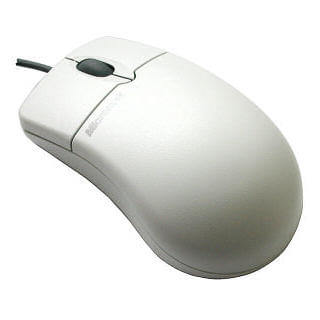
|
| Forearm Angled | Reduces forearm pronation while maintaining a similar experience to traditional flat designs | Angled forearm mice are often, if not always, designed for either the left or right hand, and cannot be used interchangeably by either hand. Some models are available in both right and left hand versions, while others are right hand only. |
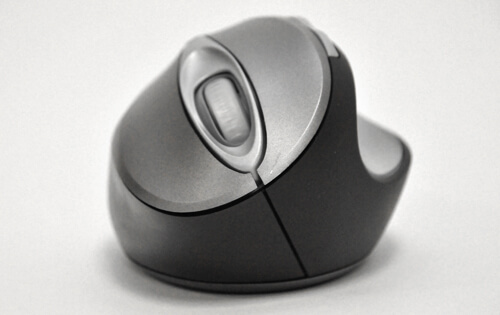
|
| Forearm Vertical | Often touted as supporting a natural "handshake posture," vertical mice encourage a more neutral forearm posture. | Non-traditional appearance and usability experience may be rejected by some users; are often, if not always, designed for either the left or right hand, and cannot be used interchangeably by either hand; some models are available in both right and left hand versions, while others are right hand only; operation involves full-arm movement, which may aggravate shoulder disorders, for example, and may affect precision for some users and tasks. |
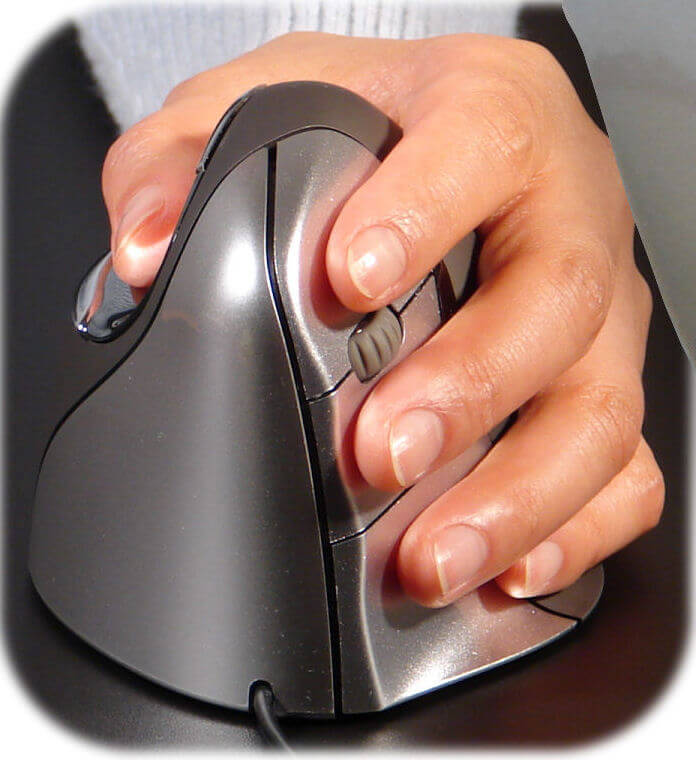
|
| Specialized Grips | Depending on the model, specialized grip designs are typically designed with a specific underlying postural theory in mind, such as recreating a pen-like grip for precision tasks, or encouraging a "position of function" for the hand. | Non-traditional appearance and usability experience may be rejected by some users; some specialized grip designs, such as those touting precision (e.g., the bottom two examples at right), are more suitable for specific precision tasks, and may not necessarily improve the user experience for general computing tasks. |
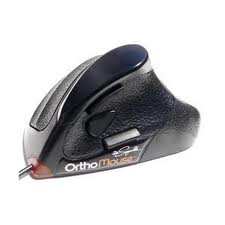
|
| Centered | Eliminates the need to reach to one side or the other, reducing shoulder loading; offers flexibility in the use of different fingers/thumb to operate. | Non-traditional appearance and usability experience may be rejected by some users; some models don't integrate well with shaped or split keyboards; requires additional work surface space. |

|
| Trackball | Depending on the model, can reduce concentrated forces by distributing operations over more than one finger; can provide enhanced precision. | Non-traditional appearance and usability experience may be rejected by some users; some models concentrate loading onto one finger/thumb. |
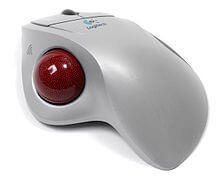
|
| Touch Pad | Introduced the concept of finger/touch interaction; minimizes force at the fingers and eliminates grip requirements. | Non-traditional appearance and usability experience may be rejected by some users; this technology is being replaced by technology improvements that support touch surface / gesturing. |
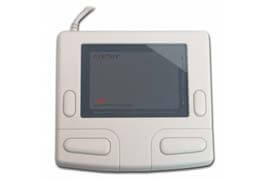
|
| Touch Surface | Reduces or eliminates the need to grip; minimizes forces; provides variable posture support; may provide new functionality (e.g., multiple finger swiping protocols). | Non-traditional usability experience may be rejected by some users; some users experience high error rates, especially while learning the swiping protocols. |
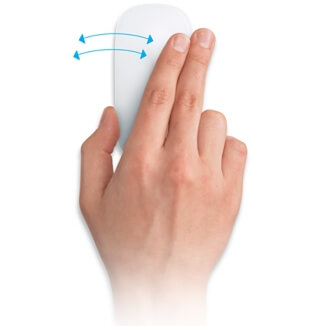
|
| Pen, or Stylus | Designed to emulate the posture used in writing tasks; depending on the model, can be good for precision tasks. | Can result in contact stress points on the side or base of the hand; like writing, can result in high pinch grip forces. |
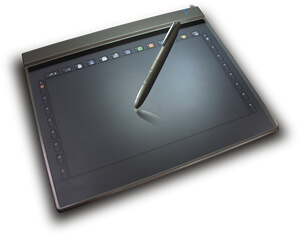
|
| Foot Controlled | Eliminates the hand(s) from mousing tasks; has applications beyond typical computer inputs (e.g., musicians that need to operate computers / switches while performing with their hands). | Non-traditional appearance and usability experience may be rejected by some users; potentially long learning curve; potential performance degradation. |
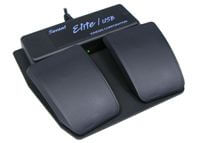
|
As I compiled the table above, it became harder to separate each unique underlying theory into clearly separate categories. For instance, I added a "Specialized Grip" category as a bit of a catch-all, but there are many examples that could fit this category, and some are very good, while others may not be, so it's hard to lump them together and make generalized statements about the category as a whole.
Also notice that I haven't addressed clicking and scrolling functionality, design features that can have a significant impact on user health and experience. That's the subject for another article, but it's worth noting here that clicking and scrolling designs that place the load on one or two specific fingers or thumb, can lead to problems, especially for intensive users.
Also notice that there are whole categories of mice for specific tasks, such as gaming. Those, too, are the subject for another article. So many theories; so many mice; an ergonomist's work is never done!
Originally published on ergoweb.com July 17, 2013.

